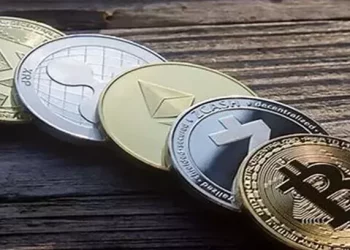In the modern age, digital currency is taking the financial world by storm, offering a digital alternative to traditional currencies. Many individuals and investors are intrigued by the concept of digital currency, but there is often confusion surrounding how it is created. In this article, we will delve into the intricacies of digital currency creation, providing a detailed understanding of this fascinating process. By the end of this article, you will have a comprehensive insight into how digital money is born and the technologies that power it.
The Foundation of Digital Currency Creation
To grasp the creation of digital currency, we must first establish the foundational principles. This section will cover the fundamental concepts that underpin the process.
1. Digital Currency Defined: Digital currency, commonly known as cryptocurrency, is a decentralized form of currency that relies on cryptography for secure transactions. Bitcoin, Ethereum, and Litecoin are well-known examples.
2. Blockchain Technology: The creation of digital currency primarily revolves around blockchain technology. A blockchain is a distributed ledger that records all digital currency transactions across a network of computers, ensuring transparency and security.
The Mining Process
One of the most prominent methods of digital currency creation is mining. This section will provide a detailed breakdown of the mining process.
1. What is Mining?: Mining is the process of validating transactions and adding them to the blockchain. Miners use powerful computers to solve complex mathematical problems, a task known as proof-of-work.
2. Block Creation: Miners compete to solve these mathematical puzzles, and the first one to succeed creates a new block containing a batch of transactions. This block is then added to the blockchain.
3. Rewards: Miners are rewarded for their efforts with newly created digital currency and transaction fees paid by users.
4. Proof-of-Stake (PoS): Some digital currencies, like Ethereum, are transitioning to a proof-of-stake system, where validators are chosen to create new blocks based on the amount of currency they hold and are willing to “stake” as collateral.
See Also: A Comprehensive Guide on How to Mine Digital Currency
Digital Currency Creation via Tokenization
Apart from mining, another method for digital currency creation is tokenization. This section will explore how tokenization works.
1. Tokenization Explained: Tokenization involves creating digital tokens that represent assets or value on a blockchain. These tokens can be used as digital currency.
2. Asset-Backed Tokens: Some digital currencies are backed by real-world assets, such as gold or fiat currency. Each token is backed by a corresponding amount of the asset, ensuring stability and security.
3. Initial Coin Offerings (ICOs): ICOs are a common way to introduce new digital currencies through tokenization. Investors purchase these tokens during ICOs, providing funding for the development of the digital currency.
The Role of Cryptography
Cryptography plays a pivotal role in digital currency creation and security. This section will delve into its significance.
1. Cryptography in Transactions: Digital currency transactions are secured through cryptographic techniques. Public and private keys are used to authenticate and encrypt transactions, ensuring that only the intended recipient can access the funds.
2. Hash Functions: Cryptographic hash functions are utilized in the mining process to ensure that blocks are secure and immutable. These functions generate unique codes for each block.
The Future of Digital Currency Creation
The world of digital currency creation is constantly evolving. In this section, we’ll discuss the future prospects of this innovative field.
1. Proof-of-Work vs. Proof-of-Stake: The transition from proof-of-work to proof-of-stake is gaining momentum in digital currency networks, as it’s considered more energy-efficient and sustainable.
2. Smart Contracts: With the advent of smart contracts, digital currencies can be programmed to execute predefined actions automatically. This technology is poised to revolutionize various industries, including finance and supply chain management.
3. Central Bank Digital Currencies (CBDCs): Several countries are exploring the creation of their own digital currencies, known as central bank digital currencies (CBDCs). These are government-backed digital currencies that could reshape the financial landscape.
4. Increased Adoption: As more businesses and individuals embrace digital currencies, their creation and use are expected to become more streamlined and accessible.
In conclusion
The creation of digital currency is a complex and dynamic process that involves technologies like blockchain, mining, and tokenization. As the digital currency landscape continues to evolve, it is vital to stay updated on the latest developments in this field. Whether you are a novice or an enthusiast, understanding the mechanics of digital currency creation can empower you to make informed decisions and participate in the exciting world of digital finance. With the ongoing advancements and innovations, the future of digital currency creation promises new opportunities and applications, which are set to transform the way we transact and store value.
Related topics:















